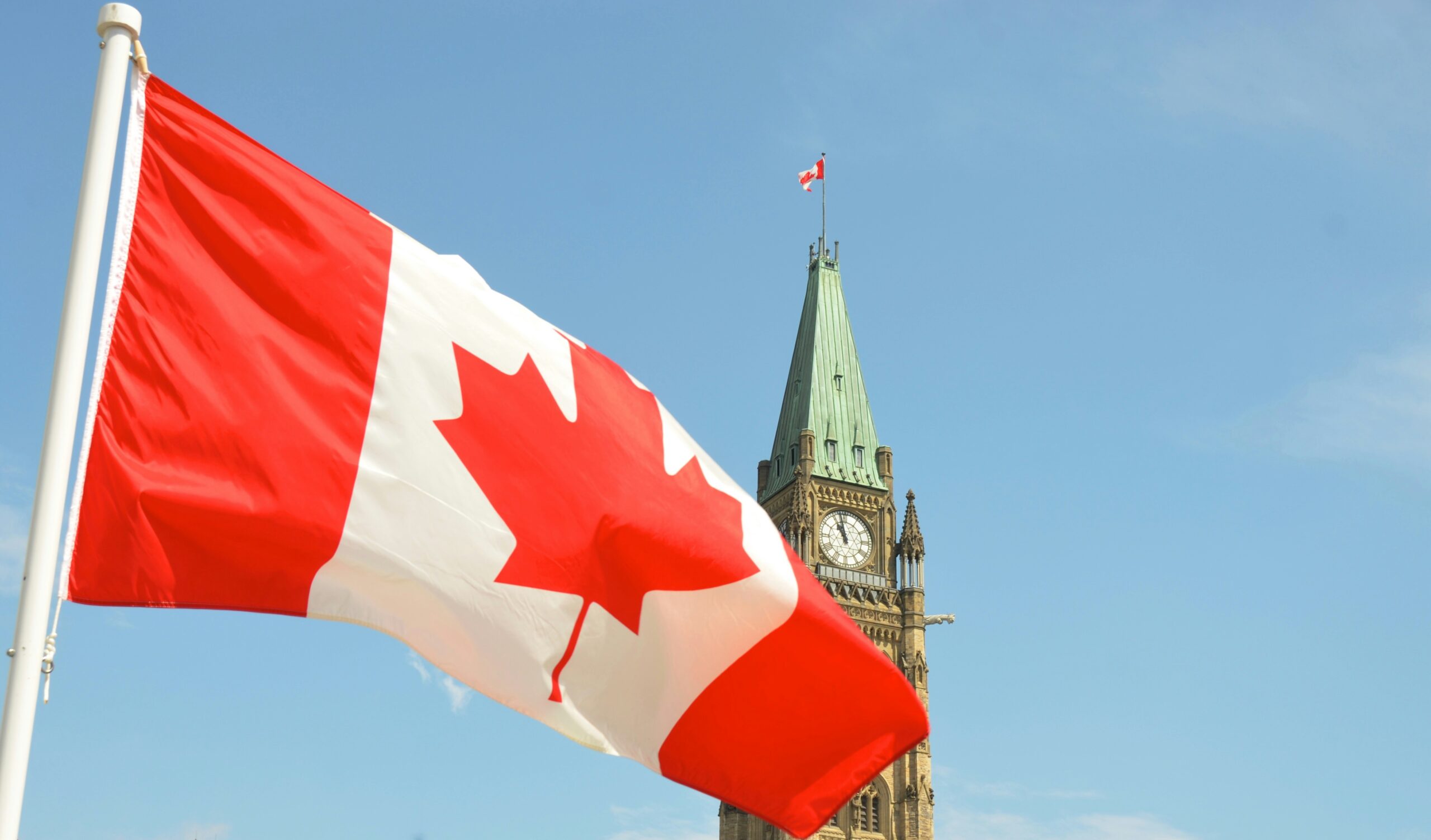
It has been just under over a month since Canada’s 45th federal general election, offering us time to reflect on what was truly a historic event in the nation’s political landscape.
The 2025 federal election delivered no shortage of surprises. From Pierre Poilievre and Jagmeet Singh losing their seats in the House of Commons, to a dramatic decline in support for the NDP, the results defied expectations. While most Canadians anticipated a close contest between the Liberals and Conservatives, few could have predicted the extent to which these two parties would consolidate national support and electoral power.
This consolidation of power was fuelled in part by voters leaving the NDP behind. However, many Canadian voters also abandoned third party candidates in this year’s election, choosing to concentrate their support for either the Liberals or Conservatives.
The graphic below, created by designer Nick Abasolo, visualizes this trend, showing how many voters moved away from third party candidates in 2025 and toward either the Liberals or Conservatives.
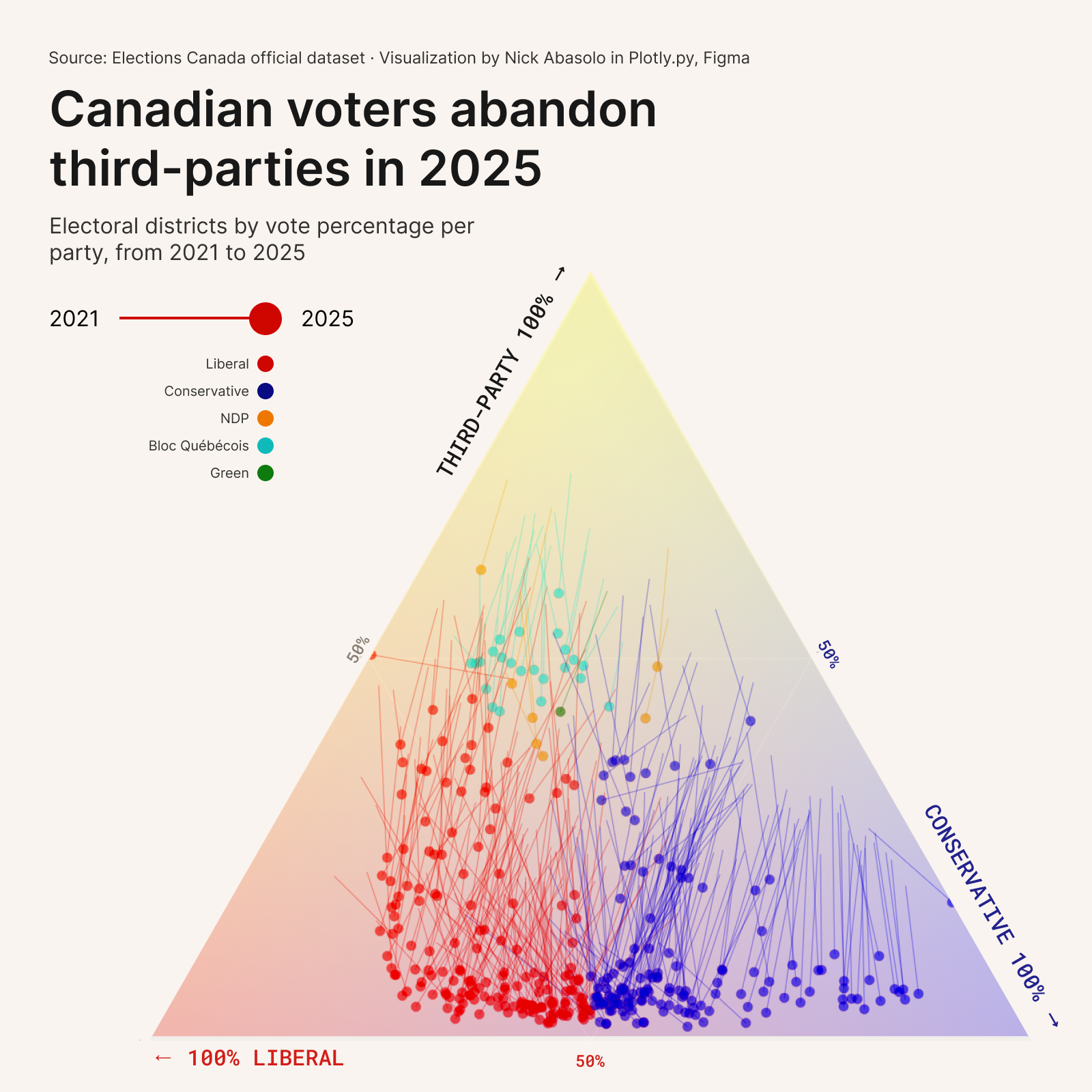
In this article, we break down the media landscape and online buzz in the weeks leading up to the election, exploring how online buzz and media sentiment influenced the election outcomes. Our analysis is based on a proprietary dataset, developed in partnership between Mozaik Analytics and Syvylyze Analytics.
Mozaik is a Toronto-based research and data consultancy, while Syvylyze Analytics is a Singapore-based analytics services provider.
Special thanks to the team at Syvylyze Analytics, particularly Paarth and Shweta, for their invaluable support on this project.
Methodology
The data for this analysis was collected through social media monitoring, utilizing Syvylyze’s innovative media monitoring solution, Saints AI. We developed comprehensive keyword profiles for each political party and leader, including common variations of their names. For example, our Liberal Party profile included terms such as: “liberal party,” “liberals,” “LPC,” “Liberal Party of Canada,” “the Grits,” and French-language equivalents.
Monitoring profiles were created for the following parties and leaders:
- Liberal Party of Canada
- Conservative Party of Canada
- Bloc Québécois
- New Democratic Party
- Green Party of Canada
- Mark Carney
- Pierre Poilievre
- Yves-François Blanchet
- Jagmeet Singh
- Elizabeth May
All data was collected from online sources published between March 16 and April 21, 2025. We used generative AI models to process and categorize the data, identifying common discussion themes and sentiment. In total, we captured and analyzed nearly 300,000 mentions of the political parties and leaders listed above.
2025 Election Result Recap
Before diving into the media data, let’s recap the outcome of the 2025 federal election and compare it to previous electoral outcomes.
The slope chart below illustrates the distribution of electoral seats across all federal elections from 2011 to 2025.
As the chart shows, the Liberals and Conservatives dominated in 2025, capturing 91% of the 343 electoral seats—a significant consolidation of power. In the previous three federal elections (2015, 2019, and 2021), these two parties had never collectively exceeded 83% of the electoral seats.
But what about the popular vote? The following chart shows voting outcomes, in terms of ballots cast, from 2011 to 2025.
In 2025, the Liberal and Conservative parties secured a historic 16,650,251 votes, representing 85% of all ballots cast. For context, in the 2019 and 2021 elections, these parties collectively garnered around 67% of the popular vote.
At the surface level, this election may have appeared to be a clear win for the Liberals. But the Conservative party gained massively, both in terms of votes cast and electoral seats won. But Poilievre lost seat was undoubtedly a setback for his party.
The gains for the Liberals and Conservatives came largely at the expense of all other parties, with the exception of the Bloc Québécois. The NDP suffered the most significant losses, dropping 18 seats and receiving nearly two million fewer votes in 2025 compared to 2021.
To put this in perspective, the NDP won over 100 seats and 4.5 million votes in 2011. This year’s performance marks a historic low for the party.
The NDP was not alone in its losses. The People’s Party of Canada (PPC), which captured nearly 5% of the popular vote in 2021, received 700,000 fewer votes in 2025. Although the PPC failed to win any seats in 2021, the loss of these ballots likely contributed to the Conservatives’ gain of 25 additional seats.
In summary, 2025 was a decisive victory for the Liberals and Conservatives, and a significant setback for every other party. But despite the Conservatives’ gains, the loss of Pierre Poilievre’s own riding was a notable blow to the party.
Online Buzz Leading Up to the Election
We analyzed more just under 300,000 online mentions related to Canadian political parties and leaders in the weeks preceding the election.
X (formerly Twitter) was the dominant platform, accounting for 30% of all election-related mentions. News outlets and Bluesky each contributed 17%, followed by YouTube (11%), independent sites (9%), and Facebook (7%). Platforms such as Reddit, TikTok, Instagram, and LinkedIn made up smaller but still meaningful portions of the conversation.
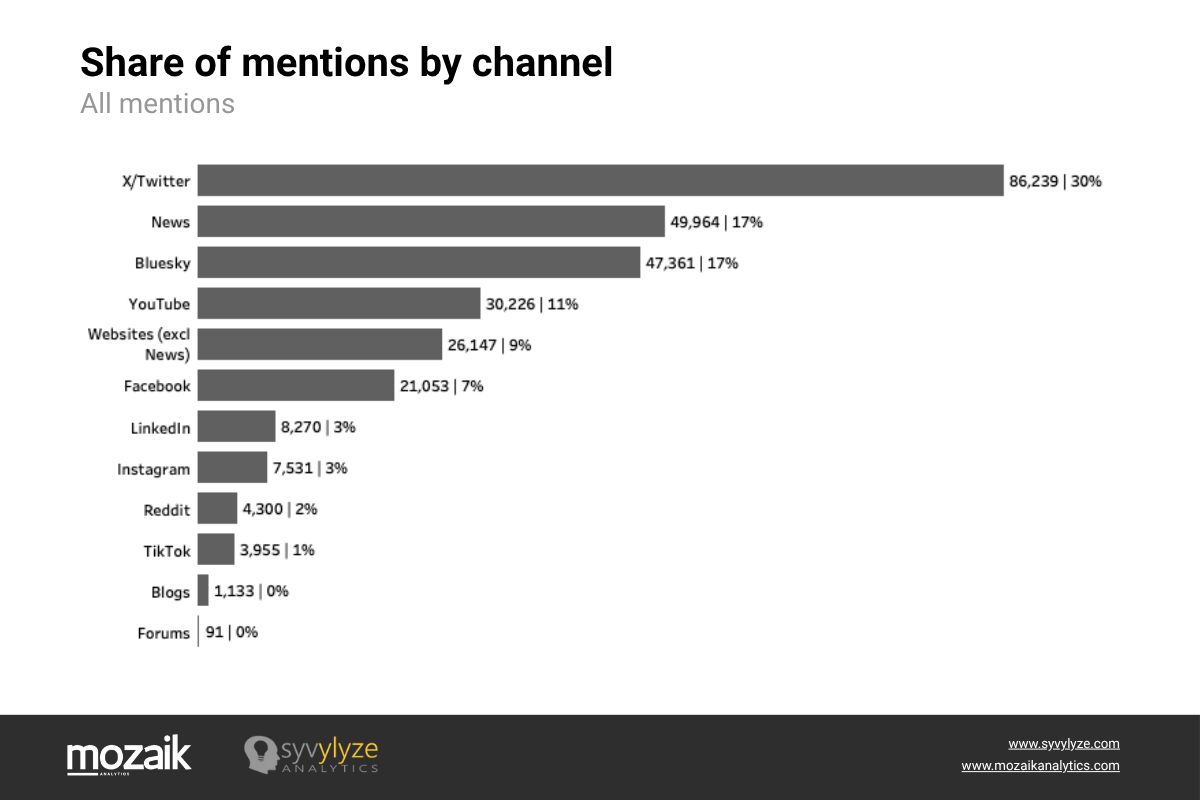
Sentiment analysis revealed stark contrasts between channels. X, while the most active, was also the most polarized: 57% of mentions were negative, compared to just 31% positive. In contrast, news sources and professional networks like LinkedIn skewed heavily positive (65% and 68% positive, respectively). Bluesky stood out for its even split, with 45% positive and 45% negative mentions.
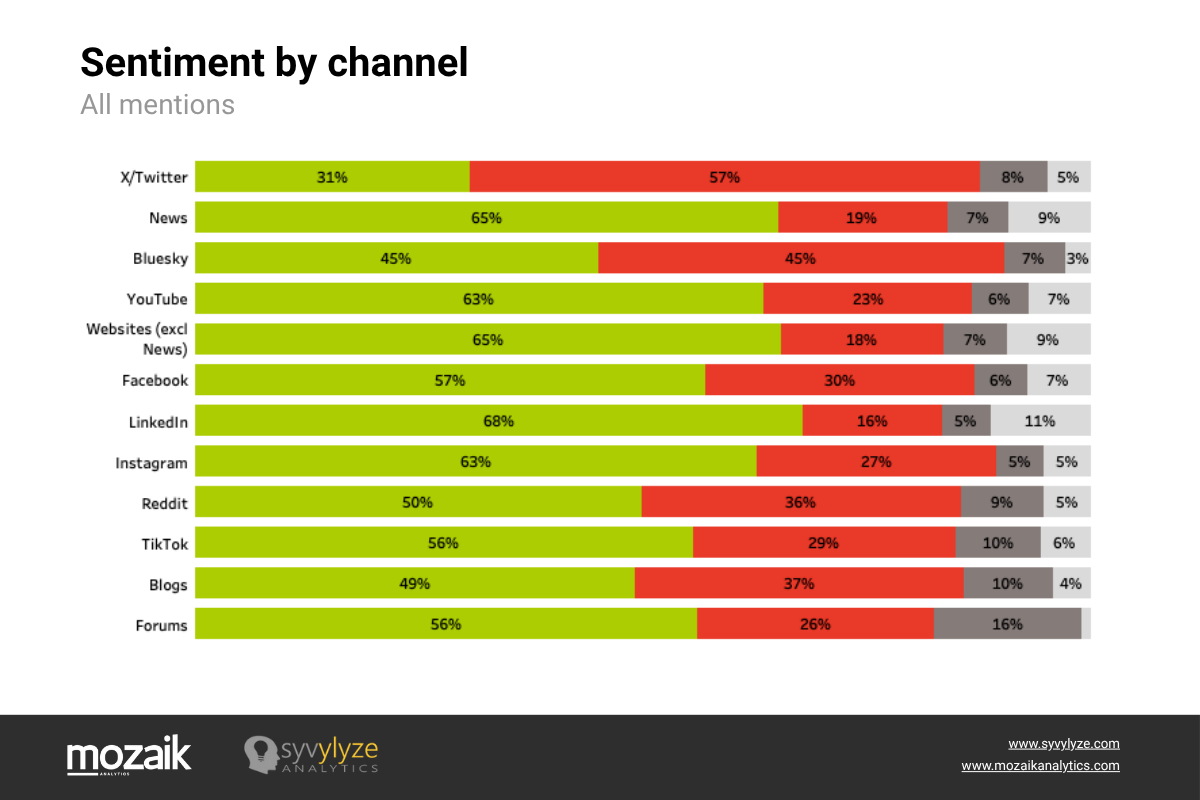
Party Politics: Mentions and Sentiment by Political Party
In terms of share of voice, the Liberal Party led the online conversation with 29%, followed by the Conservatives at 24%. The NDP, Bloc Québécois, and Green Party trailed with 12%, 8%, and 5%, respectively.
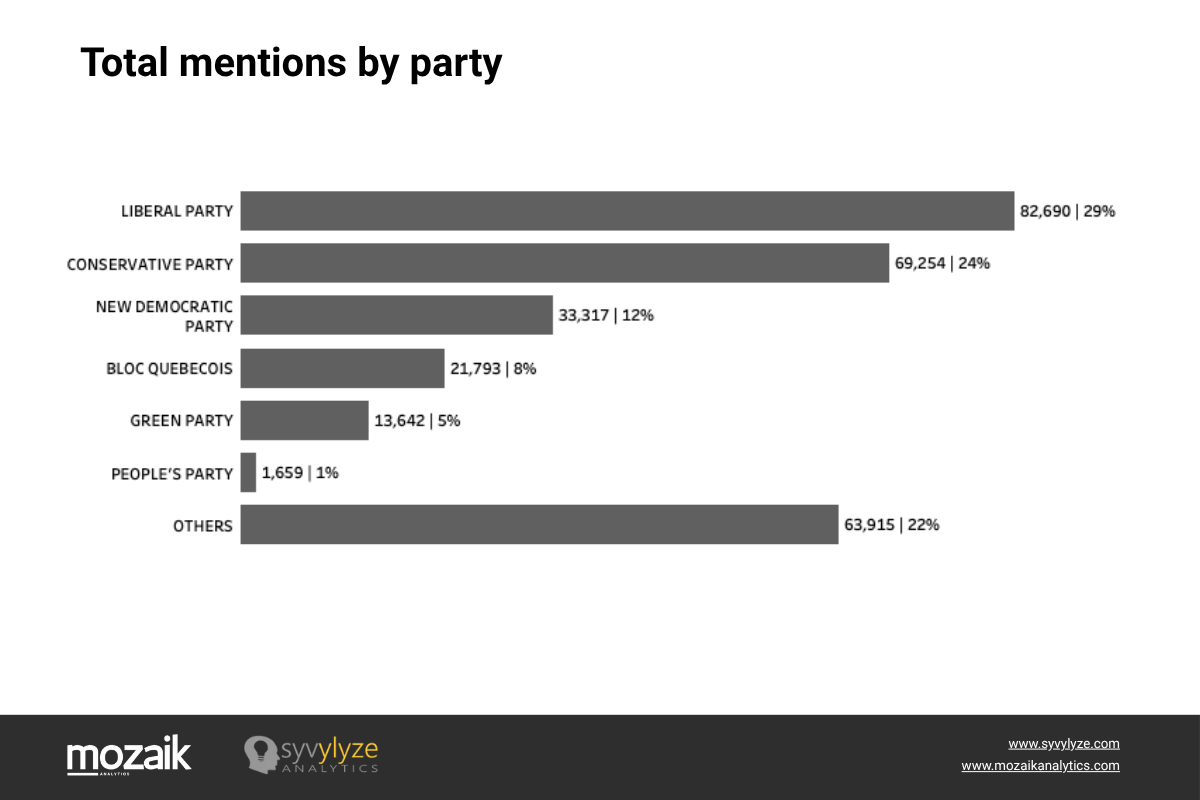
Sentiment analysis showed the Bloc Québécois enjoyed the most positive sentiment (65% positive, 21% negative), driven in part by favorable views of Yves-François Blanchet’s debate performance.
The Liberals and Conservatives, while commanding the largest share of mentions, faced more polarized sentiment: 50% positive versus 41% negative for the Liberals, and 47% positive versus 43% negative for the Conservatives.
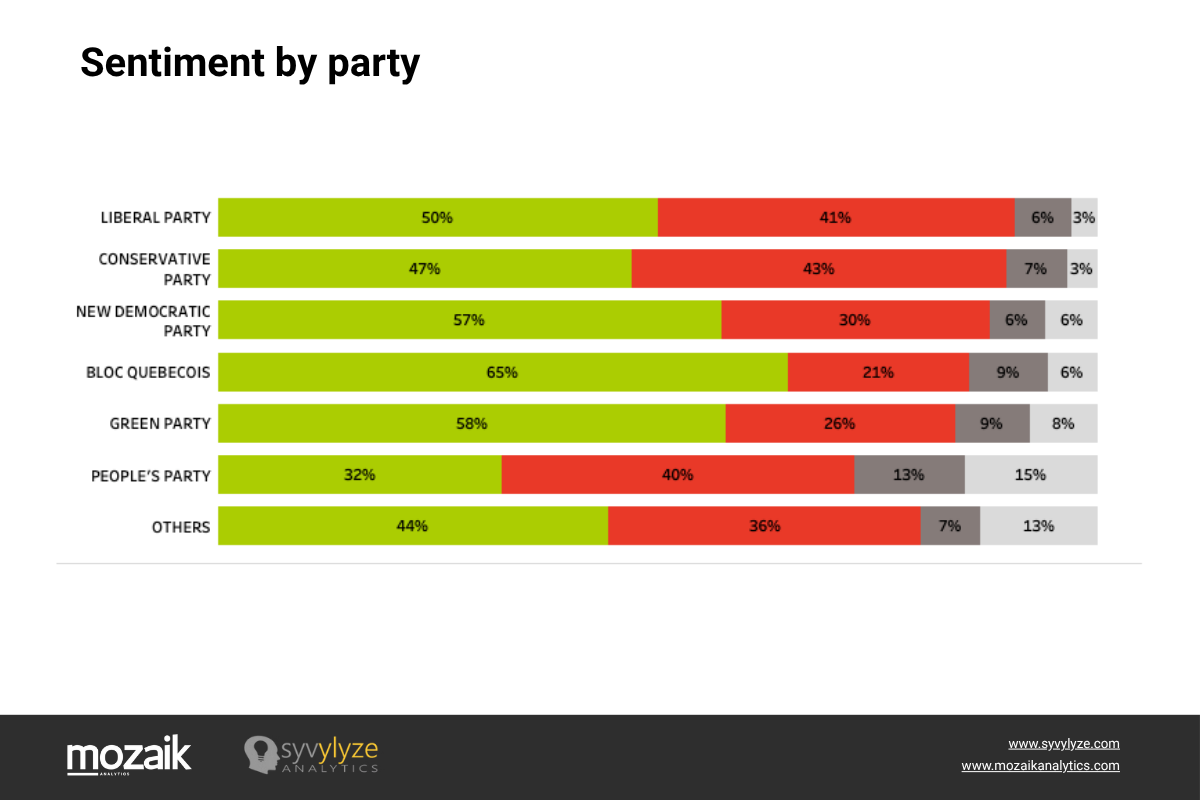
Channel-specific analysis revealed that the Liberals and Conservatives dominated X and Bluesky, while the NDP and Bloc Québécois had a stronger presence in news coverage and on independent sites. The Green Party’s mentions were more evenly distributed, reflecting its niche but engaged online following. The table below, based on column totals, shows the composition of mentions by channel for each party.
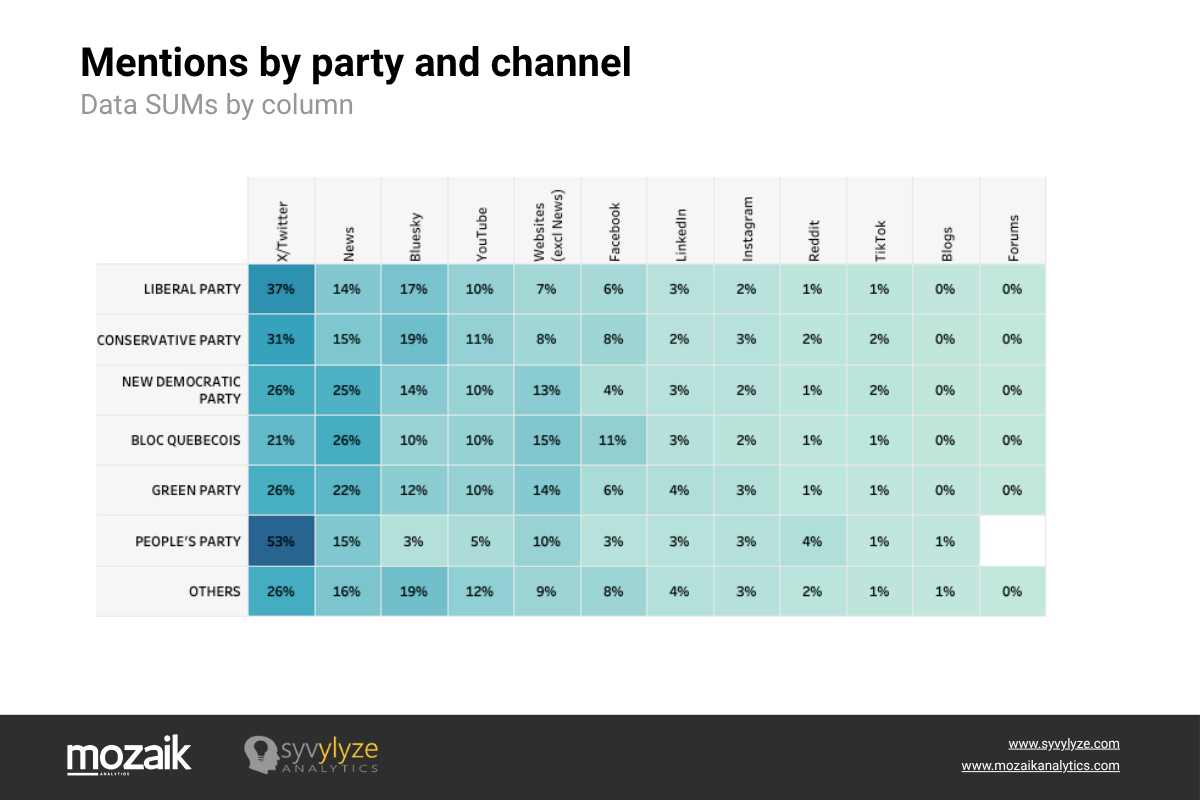
A deeper dive into sentiment, illustrated by the following treemap diagrams, shows the breakdown of sentiment by party and channel. In the graphic below, the red areas represent the share of negative mentions, green indicates positive, dark grey is neutral, and light grey shows mentions where sentiment could not be derived. While this graphic does not provide hard statistics, it offers a unique visual analysis of party sentiment across channels.
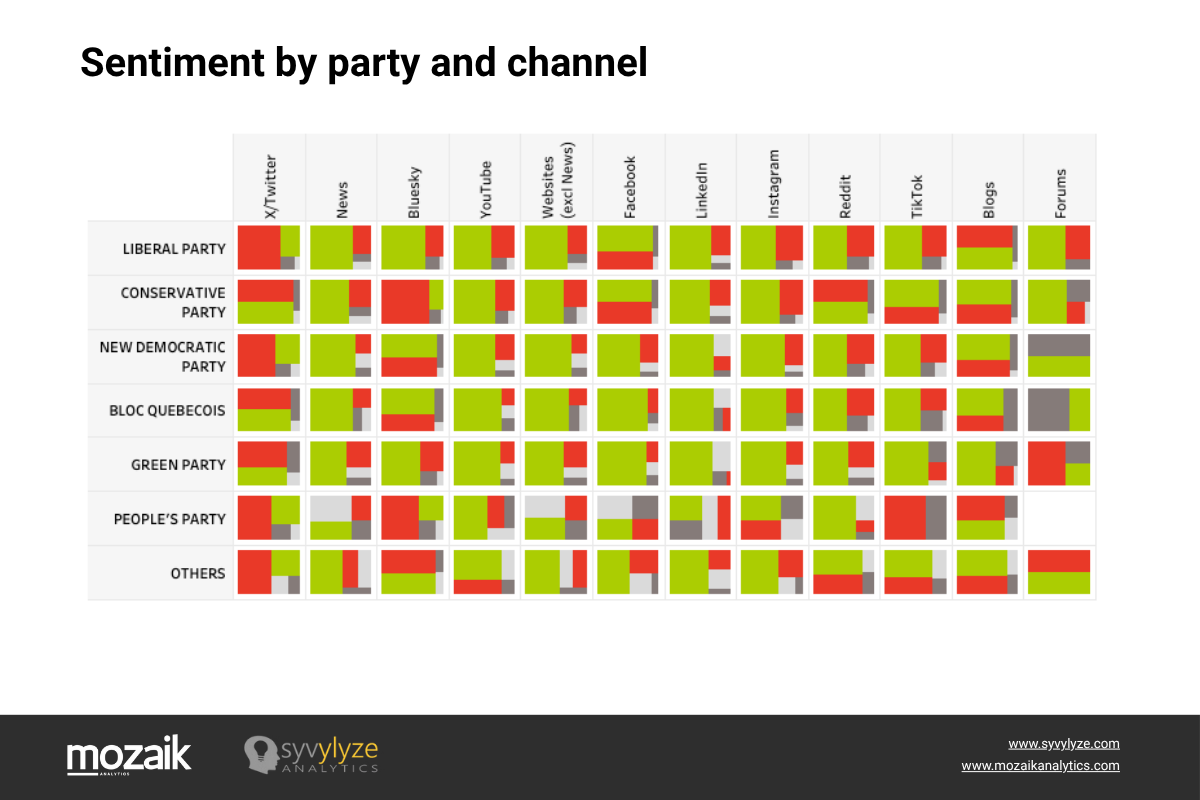
The diagram reveals that the Liberal Party received a large share of negative mentions on X, but mostly positive coverage on other channels such as news, Bluesky, and YouTube. The Conservative Party, meanwhile, saw a balanced share of positive and negative mentions on X, but was viewed overwhelmingly negatively on Bluesky.
Spotlight on Leaders: Mentions and Sentiment by Candidate
Among party leaders, Prime Minister Carney and Pierre Poilievre were the most discussed, accounting for 38% and 35% of leader mentions, respectively. Jagmeet Singh, Yves-François Blanchet, and Elizabeth May followed at 15%, 7%, and 5%.
Sentiment toward leaders varied widely. Yves-François Blanchet received the highest positive sentiment (73%), highlighting strong support among his and the Bloc’s base. Jagmeet Singh also garnered positive sentiment (62% of his mentions), but from a much smaller base (around 18K mentions). Prime Minister Carney generated overall positive buzz, with 58% positive and 33% negative sentiment. Pierre Poilievre’s mentions were more divided (47% positive, 44% negative), reflecting his polarizing presence online. Elizabeth May’s sentiment was also net positive (53% positive, 32% negative).
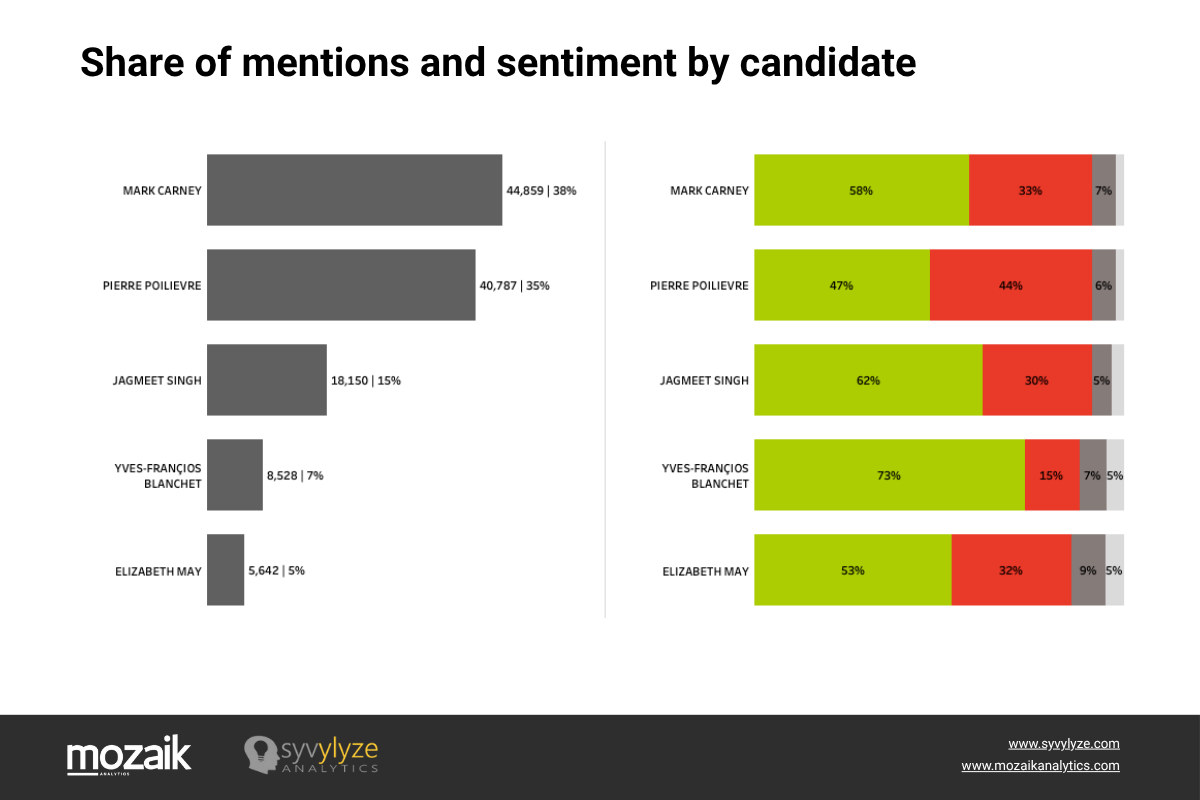
Channel analysis shows that Prime Minister Carney and Poilievre were most prominent on X and Bluesky, while Singh’s strongest presence was in news coverage. Blanchet’s mentions were concentrated in news and independent sites, aligning with his party’s regional focus. Elizabeth May’s online footprint was smaller but saw a notable spike on X.
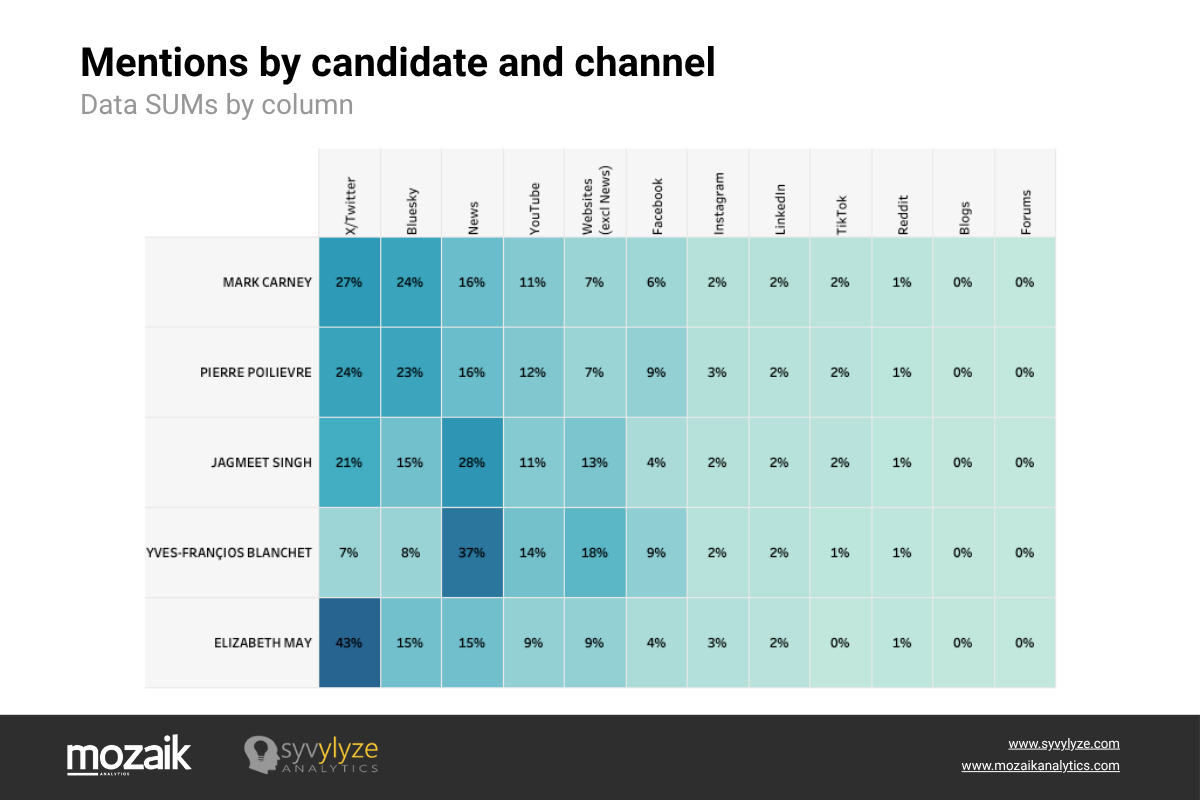
Examining sentiment by candidate and channel, we see that X was mostly negative toward Prime Minister Carney, Jagmeet Singh, and Elizabeth May. In contrast, sentiment toward Pierre Poilievre and Yves-François Blanchet on X was more balanced between positive and negative.
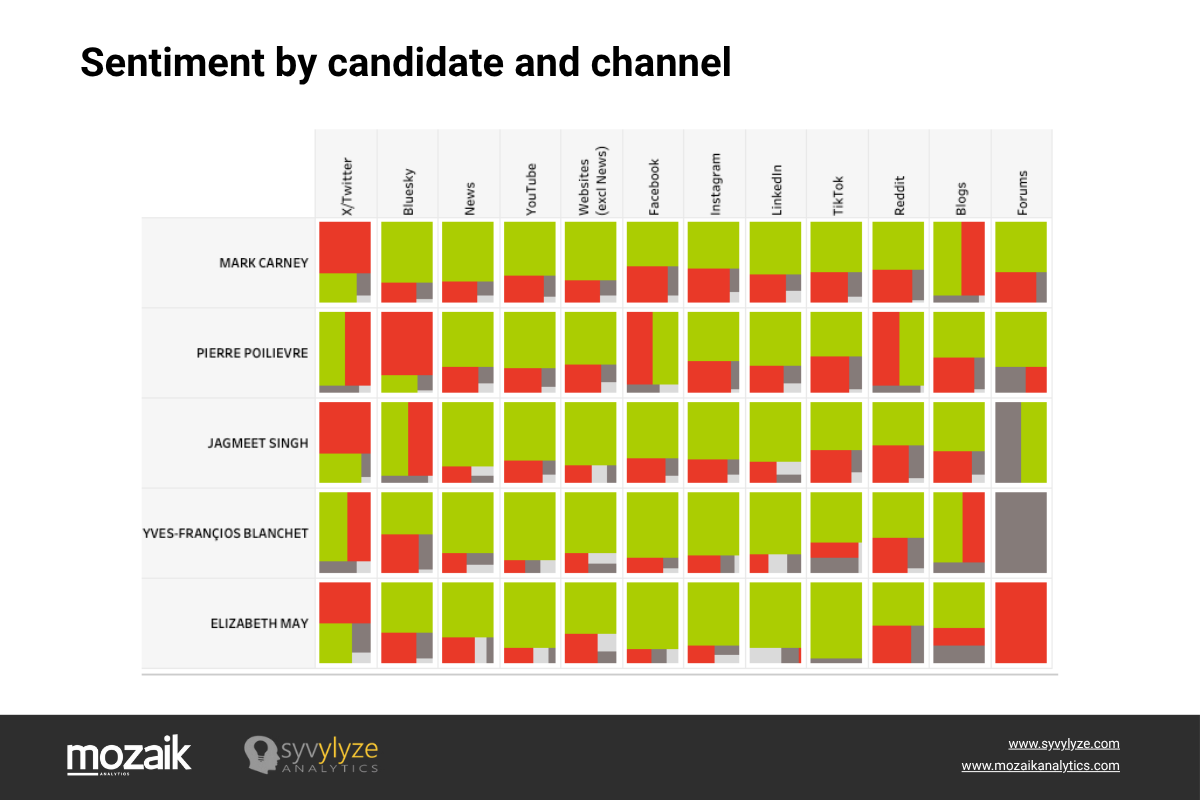
Discussion Topics by Candidate
Finally, we examined the core themes of discussion that emerged in relation to the candidates. We focused our analysis on the negative / critical buzz surrounding the two leading candidates, Prime Minister Carney and Poilievre. The bubble charts below show the core negative themes that emerged.
For Pierre Poilievre, the leading sources of negative buzz were general opposition to his policies (17%), his perceived alignment with Donald Trump (16%), and controversy surrounding his support for Aaron Gunn (15%).
For Prime Minister Carney, the leading negative theme was his association with the Liberal party (19%), with the main concern that Carney would be ‘more of the same’ when it comes to Liberal leadership. Other core themes included trustworthiness (17%) and comparison to Justin Trudeau (13%).
Conclusion
The 2025 Canadian federal election was not only a watershed moment in terms of electoral outcomes, but also in the way digital conversations and media sentiment shaped the political landscape. The dramatic consolidation of support for the Liberals and Conservatives, the historic setbacks for the NDP, and the shifting tides of online discourse all point to a new era in Canadian politics. One where the battle for public opinion is increasingly fought and won online.
